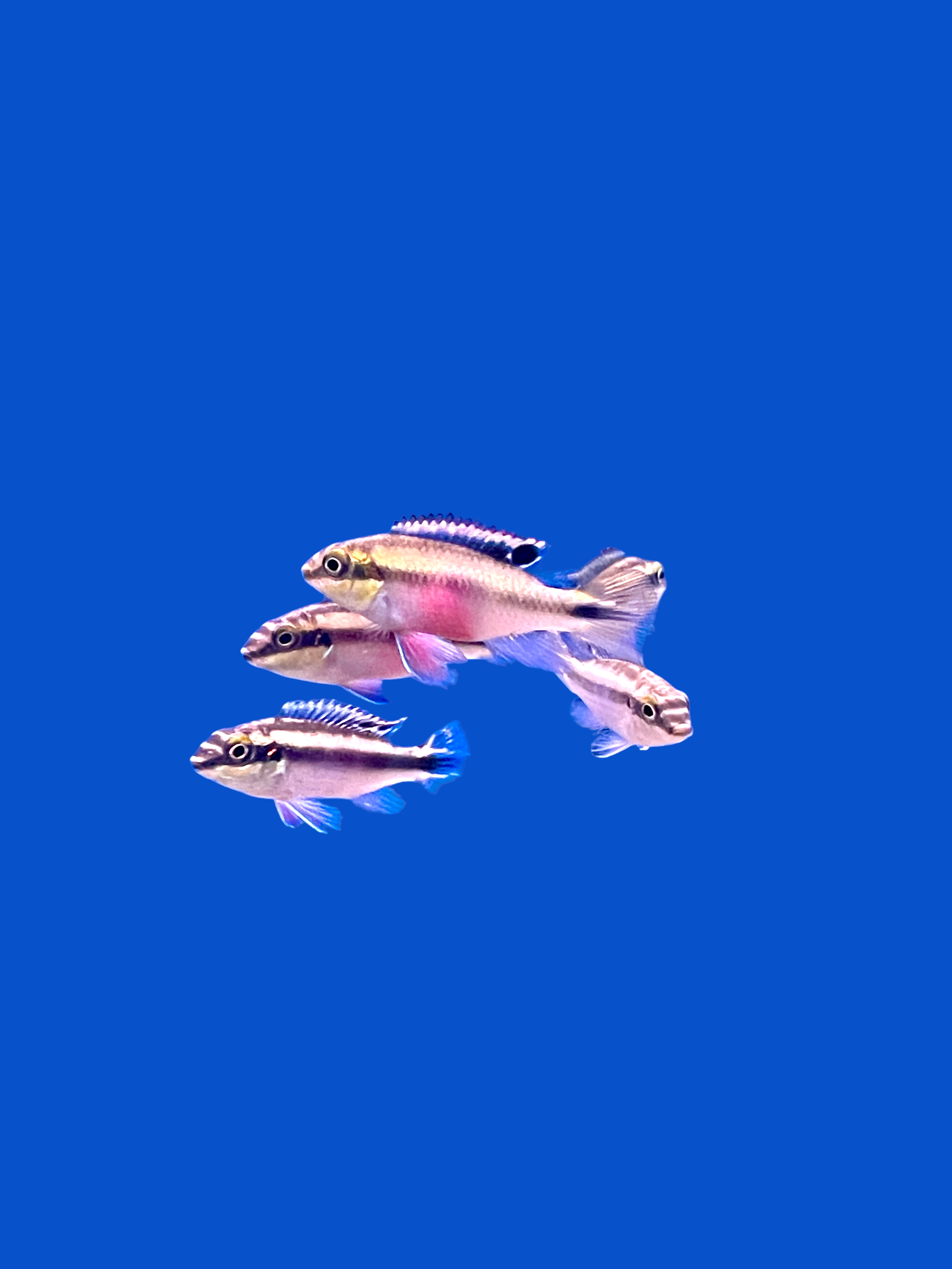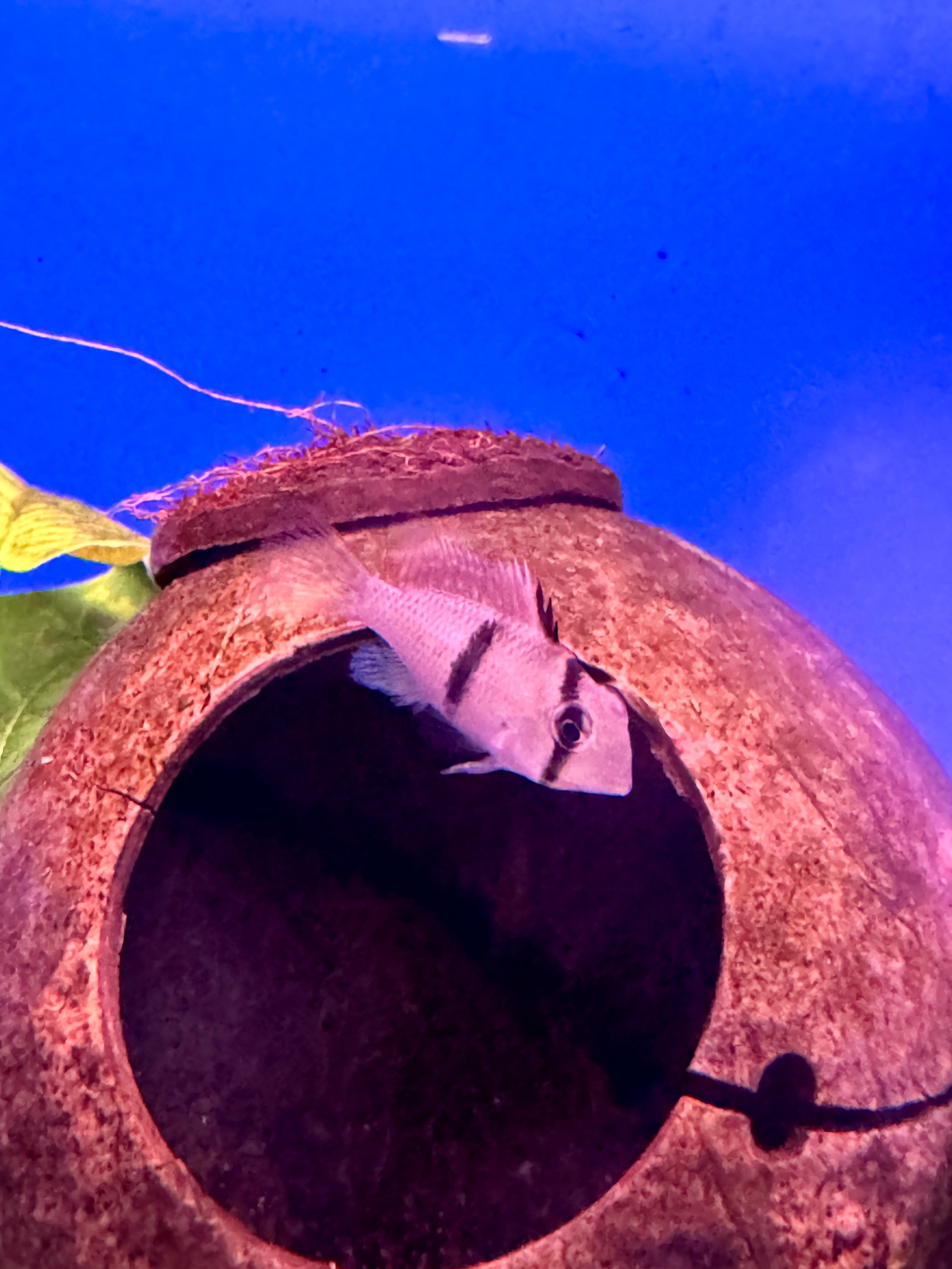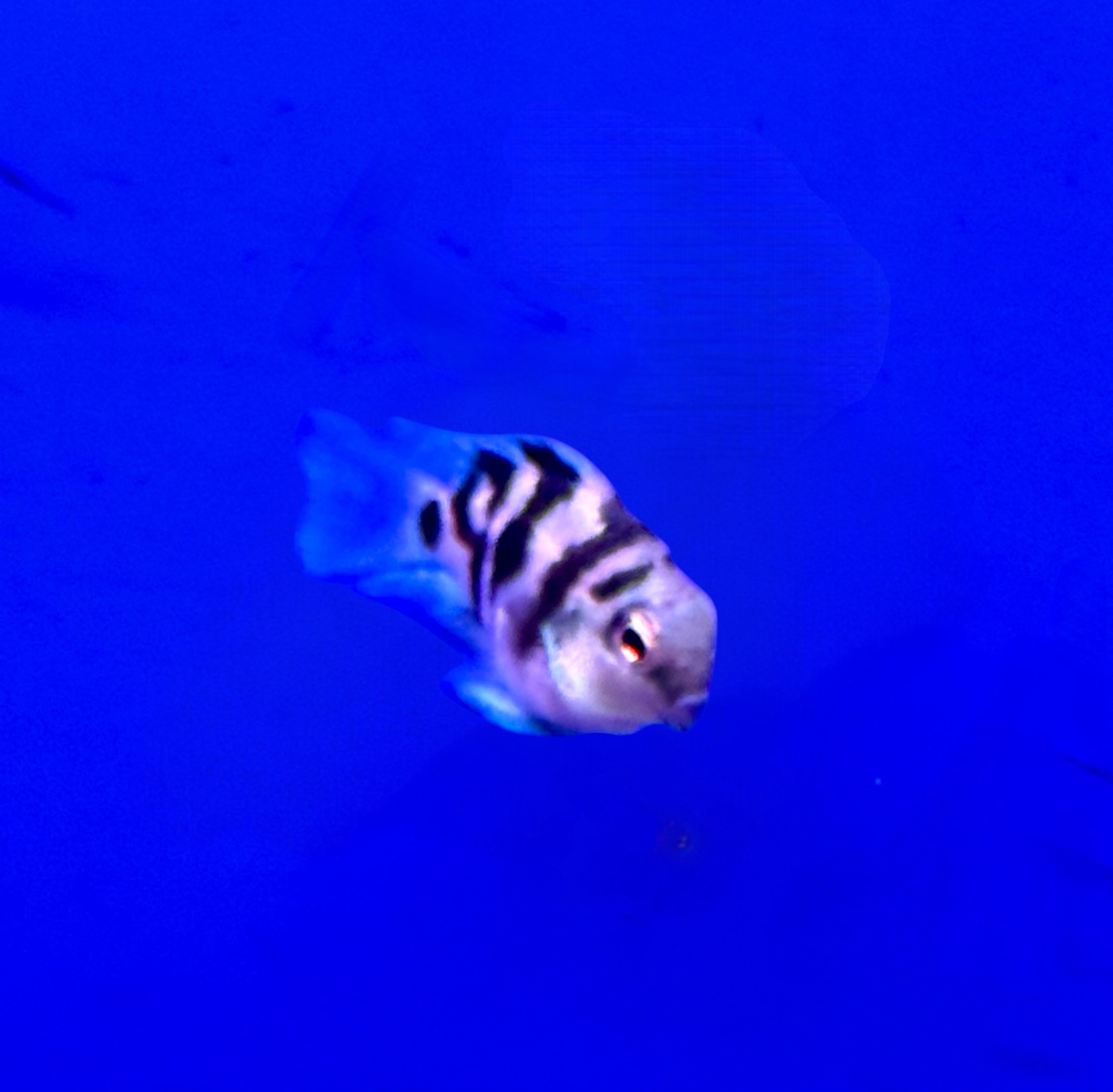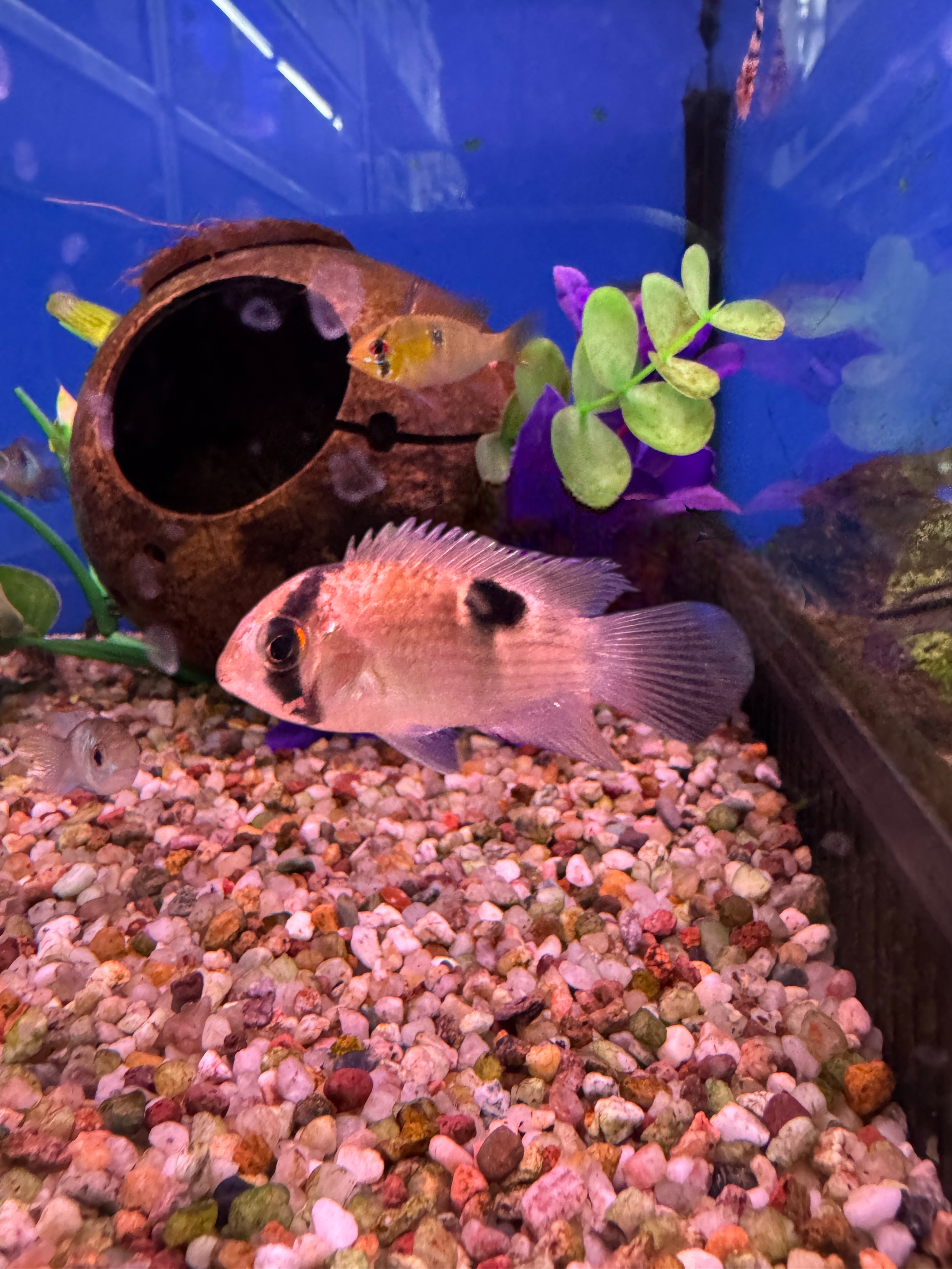 Image 1 of 1
Image 1 of 1


Male Umbrella Borelli - Apistogramma Borellii 3-4cm
The Umbrella Borelli Dwarf Cichlid, also known as Borelli's Apisto, is a small and colorful cichlid that is highly prized among aquarium enthusiasts for its striking appearance and interesting behavior. These fish are native to the Amazon River basin, where they inhabit slow-moving, heavily vegetated waters. The males are particularly vibrant, often displaying a deep blue or turquoise body with a distinctive black spot on the dorsal fin, which resembles an umbrella, hence the common name. Females, on the other hand, are typically more subdued in color, often showing a yellowish or orange hue with black markings.
Behavior:
Umbrella Borelli Dwarf Cichlids are generally peaceful and can be kept in community tanks with other small, non-aggressive fish. However, they can become territorial, especially during breeding periods. Providing plenty of hiding spots and territories, such as caves, driftwood, and dense plantings, can help reduce aggression and stress. They are also known for their intricate breeding behaviors, which include the male building a nest and the female laying eggs. The male will then guard the eggs and fry, making them an interesting species to observe in a breeding setup.
Tank Setup:
These cichlids thrive in a well-maintained, well-planted aquarium with a gentle current. A soft, sandy substrate is ideal, as it mimics their natural habitat and is gentle on their delicate fins. Driftwood and rocks can be used to create natural hiding spots and territories. Dim lighting is preferred, as it helps them feel more secure and reduces stress. Regular water changes and a clean environment are essential for their health and well-being.
Diet:
Umbrella Borelli Dwarf Cichlids are omnivorous and will accept a variety of foods. A balanced diet should include commercial cichlid pellets, live or frozen foods like brine shrimp, daphnia, and bloodworms, as well as occasional vegetable matter. Feeding them a diverse diet helps ensure they receive all the necessary nutrients and maintain their vibrant colors.
Breeding:
Breeding Umbrella Borelli Dwarf Cichlids can be a rewarding experience. They are egg layers and will typically spawn in a cave or other secluded area. The male will build a nest and court the female, who will then lay her eggs. The male will fertilize the eggs and guard them until they hatch, which usually takes about 3-5 days. The fry are free-swimming a few days after hatching and can be fed on a diet of infusoria and finely crushed flakes. As they grow, they can be introduced to baby brine shrimp and other small live foods.
Tank Mates:
Ideal tank mates for the Umbrella Borelli Dwarf Cichlid include peaceful, small fish such as tetras, rasboras, and small barbs. They can also be kept with other peaceful dwarf cichlids, but it's important to ensure there are enough hiding spots to prevent territorial disputes. Avoid keeping them with aggressive or overly active species that might stress or harm them.
Overall, the Umbrella Borelli Dwarf Cichlid is a beautiful and engaging addition to any freshwater aquarium. Their unique appearance and interesting behaviors make them a favorite among cichlid enthusiasts, but they require a carefully planned environment and a balanced diet to thrive. With the right care, they can bring a lot of joy and color to your tank.
The Umbrella Borelli Dwarf Cichlid, also known as Borelli's Apisto, is a small and colorful cichlid that is highly prized among aquarium enthusiasts for its striking appearance and interesting behavior. These fish are native to the Amazon River basin, where they inhabit slow-moving, heavily vegetated waters. The males are particularly vibrant, often displaying a deep blue or turquoise body with a distinctive black spot on the dorsal fin, which resembles an umbrella, hence the common name. Females, on the other hand, are typically more subdued in color, often showing a yellowish or orange hue with black markings.
Behavior:
Umbrella Borelli Dwarf Cichlids are generally peaceful and can be kept in community tanks with other small, non-aggressive fish. However, they can become territorial, especially during breeding periods. Providing plenty of hiding spots and territories, such as caves, driftwood, and dense plantings, can help reduce aggression and stress. They are also known for their intricate breeding behaviors, which include the male building a nest and the female laying eggs. The male will then guard the eggs and fry, making them an interesting species to observe in a breeding setup.
Tank Setup:
These cichlids thrive in a well-maintained, well-planted aquarium with a gentle current. A soft, sandy substrate is ideal, as it mimics their natural habitat and is gentle on their delicate fins. Driftwood and rocks can be used to create natural hiding spots and territories. Dim lighting is preferred, as it helps them feel more secure and reduces stress. Regular water changes and a clean environment are essential for their health and well-being.
Diet:
Umbrella Borelli Dwarf Cichlids are omnivorous and will accept a variety of foods. A balanced diet should include commercial cichlid pellets, live or frozen foods like brine shrimp, daphnia, and bloodworms, as well as occasional vegetable matter. Feeding them a diverse diet helps ensure they receive all the necessary nutrients and maintain their vibrant colors.
Breeding:
Breeding Umbrella Borelli Dwarf Cichlids can be a rewarding experience. They are egg layers and will typically spawn in a cave or other secluded area. The male will build a nest and court the female, who will then lay her eggs. The male will fertilize the eggs and guard them until they hatch, which usually takes about 3-5 days. The fry are free-swimming a few days after hatching and can be fed on a diet of infusoria and finely crushed flakes. As they grow, they can be introduced to baby brine shrimp and other small live foods.
Tank Mates:
Ideal tank mates for the Umbrella Borelli Dwarf Cichlid include peaceful, small fish such as tetras, rasboras, and small barbs. They can also be kept with other peaceful dwarf cichlids, but it's important to ensure there are enough hiding spots to prevent territorial disputes. Avoid keeping them with aggressive or overly active species that might stress or harm them.
Overall, the Umbrella Borelli Dwarf Cichlid is a beautiful and engaging addition to any freshwater aquarium. Their unique appearance and interesting behaviors make them a favorite among cichlid enthusiasts, but they require a carefully planned environment and a balanced diet to thrive. With the right care, they can bring a lot of joy and color to your tank.
Umbrella Borelli Dwarf Cichlid (Apistogramma borellii)
Scientific Name: Apistogramma borellii
Common Name: Umbrella Borelli Dwarf Cichlid, Borelli's Apisto
Family: Cichlidae
Origin: South America, specifically the Amazon River basin in Peru and Brazil
Size: Up to 2 inches (5 cm)
Lifespan: 5-8 years
Diet: Omnivorous; primarily feeds on small invertebrates and plant matter in the wild, but in captivity, they can be fed a variety of commercial cichlid pellets, live or frozen foods like brine shrimp, daphnia, and bloodworms, as well as occasional vegetable matter
Temperament: Generally peaceful, but can be territorial during breeding
Water Parameters:
Temperature: 75-82°F (24-28°C)
pH: 6.0-7.5
Hardness: 2-15 dGH
Tank Size: Minimum 30 litres, but larger tanks are better for maintaining stable water conditions and providing ample space
Compatibility: Good with peaceful community fish, but avoid keeping them with aggressive or overly active species





